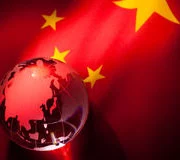AS the Trans-Pacific Partnership (TPP) negotiations progress, so too has China’s assessment of the trade agreement. The perception that the TPP is Washington’s economic effort to contain China in the region is no longer as persuasive as it once was. On the contrary, China has expressed interest and support for TPP.
In October last year, Vice-Finance Minister Zhu Guangyo hinted that China might join the TPP and that the trade bloc would be incomplete without China. Last month, official state media China Daily quoted Zhang Jianping (Institute for International Economic Research) as stating that the TPP was a possible avenue to economic integration in Asia-Pacific. Indeed, there are economic incentives for China to join. Membership could boost domestic reforms, which corresponds with President Xi Jinping prioritising “deepening market reform” as the basis of his agenda.
Chinese firms could also face discriminatory treatment in TPP markets. For example, disciplines pertaining to the rules of origin in TPP aim to encourage members’ companies to source from within the trade bloc, which could alienate component producers like China.
There could also be relocation for the production of low-tech goods — such as garments and shoes — from China to Vietnam, since wages have quintupled throughout the last decade in China.
More importantly, TPP does not prevent China from joining in future if it wishes. The trade agreement is currently open to Asia-Pacific Economic Cooperation countries, and the US has gone on record to welcome China as long as Beijing is able to meet the high standards of TPP.
However, we are witnessing a race between competing political and economic systems to determine who will write the rules for global trade. Against this backdrop, China is unlikely to join TPP.
FIRST, China’s membership will signal that it accedes to the United States becoming the leader in trade. Since Beijing has missed the opportunity to participate in setting the rules, China will have to passively accept TPP as it is. The goal of becoming a “high standard, 21st century agreement” — as envisioned by the US trade representative — indicates that it contains ambitious definitions of open markets and free trade. Therefore, membership would mean that China will have to succumb to norms that are dictated by the West.
This is unlikely, as China has consistently set its own path for development by being capitalist, yet autocratic. Beijing is also unlikely to agree to the various concessions that the US demands in TPP, particularly in areas like state-owned enterprises, services, intellectual property, labour and the environment.
The rapid, nationwide application of TPP rules could also result in social or political turmoil, when China traditionally prioritises stability above all else.
SECOND, China has responded with its own initiatives to promote international alignment on its industrial policy via bilateral FTAs, institutions like Asian Infrastructure Investment Bank (AIIB) and One Belt, One Road strategy.
China already has free-trade agreements (FTAs) with TPP members Singapore, Chile, Peru and New Zealand. Most recently, it signed an FTA with Australia on June 17. If Beijing continues to sign individual FTAs with the remaining TPP members, it would no longer feel economically isolated by the trade bloc.
There are also overlaps between TPP and Regional Comprehensive Economic Partnership (RCEP), of which China leads with Asean. Brunei, Malaysia, Singapore, Vietnam, Japan, Australia and New Zealand — more than half of TPP countries — are members of both mega FTAs.
RCEP is more conducive to China because it is less fixated on disciplines and allows for multiple exemptions on sensitive industries.
AIIB will enhance China’s development role across Asia, as the US$100 billion (RM380 billion) lender is an alternative to existing regional and global lending institutions. It also counts Western powers like the United Kingdom, France and Germany as partners.
Similarly, One Belt, One Road will boost economic exchange with China’s historical trade partners in Eurasia. China has finalised economic projects in Kazakhstan and Russia worth US$23.6 billion and US$20 billion, respectively.
THIRD, the magnitude of these initiatives indicates that China’s exclusion from TPP is making it easier for Beijing to pursue its own grand strategy. Individual FTAs, RCEP, AIIB, One Belt, One Road are ultimately pathways for China to build stronger trade and investment ties without having to succumb to global FTAs that require the opening of Chinese markets to Western competition.
It is uncertain whether the benefits of Chinese membership of TPP will outweigh the economic, political and strategic costs.
This article first appeared in New Straits Times on 21 July 2015.





